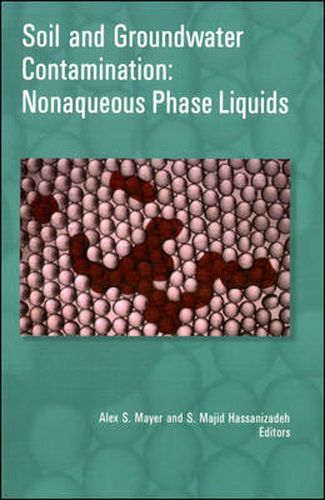Readings Newsletter
Become a Readings Member to make your shopping experience even easier.
Sign in or sign up for free!
You’re not far away from qualifying for FREE standard shipping within Australia
You’ve qualified for FREE standard shipping within Australia
The cart is loading…






Published by the American Geophysical Union as part of the Water Resources Monograph Series, Volume 17.
Nonaqueous phase liquids (NAPLs) are frequently found as soil and groundwater contaminants. Highly toxic even in small volumes, NAPLs can pose a threat to human health and damage surface and subsurface ecosystems.
In this book, we clarify the complex phenomena of NAPL migration and offer insight into the behavior of NAPLs at sites undergoing monitoring and remediation. Contents include discussion on:
Principles of NAPL behavior in the subsurface, including flow, transfer of components to water and gas phases, and transport Migration and distribution Site characterization and monitoring Remediation methods, including hydraulic removal, pump and treat, and soil vapor extraction Further discussion on gaps in our understanding of NAPLs at the field scale along with a thorough tutorial approach and supplemental CD, make this book an important guide and resource for practicing engineers and scientists, risk assessment professionals, teachers, and students.
$9.00 standard shipping within Australia
FREE standard shipping within Australia for orders over $100.00
Express & International shipping calculated at checkout
Published by the American Geophysical Union as part of the Water Resources Monograph Series, Volume 17.
Nonaqueous phase liquids (NAPLs) are frequently found as soil and groundwater contaminants. Highly toxic even in small volumes, NAPLs can pose a threat to human health and damage surface and subsurface ecosystems.
In this book, we clarify the complex phenomena of NAPL migration and offer insight into the behavior of NAPLs at sites undergoing monitoring and remediation. Contents include discussion on:
Principles of NAPL behavior in the subsurface, including flow, transfer of components to water and gas phases, and transport Migration and distribution Site characterization and monitoring Remediation methods, including hydraulic removal, pump and treat, and soil vapor extraction Further discussion on gaps in our understanding of NAPLs at the field scale along with a thorough tutorial approach and supplemental CD, make this book an important guide and resource for practicing engineers and scientists, risk assessment professionals, teachers, and students.